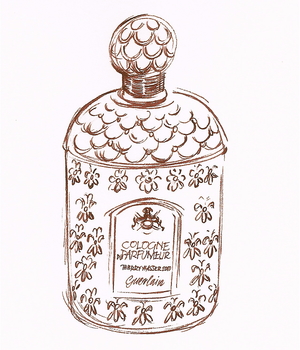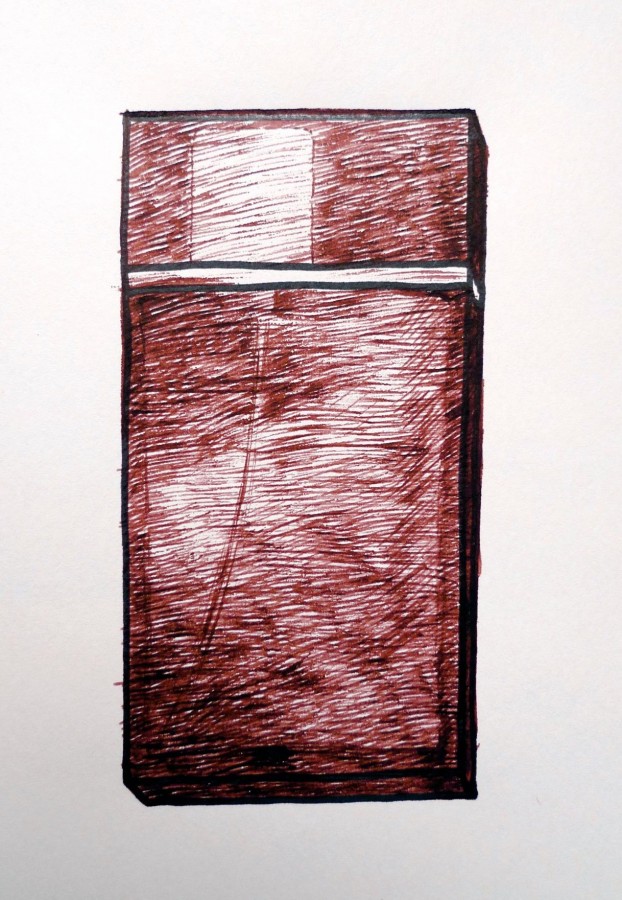Tagged With ‘rosemary’
Guerlain
Derby
21 August, 2015
 What a great perfume this is. Rich and complex yet totally wearable, Derby smells of old-fashioned luxury and style. It’s the kind of perfume that should have been name-checked in The Great Gatsby (surely the worst-written major novel of the 20th century), and yet it was first launched as recently as 1985, when electropop ruled the airwaves and shoulder-pads the size of aircraft carriers filled the pages of the fashion magazines.
What a great perfume this is. Rich and complex yet totally wearable, Derby smells of old-fashioned luxury and style. It’s the kind of perfume that should have been name-checked in The Great Gatsby (surely the worst-written major novel of the 20th century), and yet it was first launched as recently as 1985, when electropop ruled the airwaves and shoulder-pads the size of aircraft carriers filled the pages of the fashion magazines.
It was created by Jean-Paul Guerlain, the last member of the family to run the brand and a great perfumer in his own right: his other triumphs include Habit Rouge, Chamade and the fantastic Vétiver. Derby smells like crushed aromatic herbs when you first spray it on: rosemary and lavender with a hint of mint, but mixed with more exotic things like patchouli and sandalwood. Mace and pepper add a tiny touch of spice, while oakmoss, leather and vetiver give it extra depth and staying-power. After a while it smells more leathery than anything else, though still with herbs and spices mixed in – the scent of a Greek mountainside in summer.
For a long time Derby was quite hard to track down, which added to its mystique, but in 2005 Guerlain relaunched it as part of its Parisiens collection, at which point is was probably (though of course perfume companies never tell you these things) slightly ‘tweaked’ to change some of its ingredients (such as oakmoss) to comply with EU legislation. In 2011 it was repackaged in what I think is a rather cheap-looking balsawood frame, and its price went up as well: today it’s one of Guerlain’s most expensive fragrances, which I think is a shame, as it deserves to be widely worn.
Guerlain
Cologne du Parfumeur
6 August, 2014
 If there’s one scent that appeals to pretty much everyone then surely it’s eau-de-cologne, the zesty, refreshing blend of lemon and herbs whose (probably medicinal) origins are lost in the mists of time. Its oldest surviving surviving incarnation is the German No. 4711 Echt Kölnisch Wasser from – where else – Cologne, which you can buy for not very much from pretty much anywhere, but there are hundreds of other versions, from the cheap and nasty all the way up to Chanel’s divine (and divinely expensive) Eau de Cologne.
If there’s one scent that appeals to pretty much everyone then surely it’s eau-de-cologne, the zesty, refreshing blend of lemon and herbs whose (probably medicinal) origins are lost in the mists of time. Its oldest surviving surviving incarnation is the German No. 4711 Echt Kölnisch Wasser from – where else – Cologne, which you can buy for not very much from pretty much anywhere, but there are hundreds of other versions, from the cheap and nasty all the way up to Chanel’s divine (and divinely expensive) Eau de Cologne.
The basic ingredients of eau-de-cologne are extracts of citrus fruits, which give it its instant freshness, blended with a variety of herbs, usually including lavender and rosemary, which add extra staying-power and warmth. It’s more of a style than a formula, and every different eau-de-cologne has a slightly different combination of ingredients, though they all share a broadly similar character. They all suffer from one drawback, too, which is that they quickly fade away on the skin.
As one of the most historic perfume companies, Guerlain has produced a number of different takes on eau-de-cologne over the years, starting with Eau de Cologne Impériale in 1853, followed by Eau de Cologne du Coq in 1894, the glorious Eau de Fleurs de Cédrat in 1920, and Eau de Guerlain in 1974.
Cologne du Parfumeur was launched in 2010, and is the first not to have been dreamed up by a member of the Guerlain family. Its creator, the Swiss perfumer Thierry Wasser, became the company’s in-house perfumer in 2008, after the retirement of Jean-Paul Guerlain. Wasser’s interpretation of the classic eau-de-cologne retains plenty of citrusy zing, but with more orange than lemon in the mix, which makes it smell slightly sweeter and less astringent than the general run of colognes. The blend of orange used here is particularly ‘green’, which makes a bit more sense if you think of orange flowers surrounded by their glossy dark-green leaves.
Wasser accentuates this ‘greenness’ with tiny amounts of fresh-smelling mint, as well as plenty of lavender and rosemary, those classic eau-de-cologne herbs. I think I also smell a little bit of bracing juniper, which gives Voyage d’Hermès its gin-and-tonic swing. Overall it’s a gentle, appealing scent, and Wasser has given it extra staying-power thanks, it seems, to the inclusion of long-lasting synthetic musks, which add their own soft, slightly sensual touch.
Cologne du Parfumeur comes in Guerlain’s classic ‘bee’ bottle, with fish-scale patterned shoulders, 69 stylised embossed bees on the sides and a rather cheap-feeling plastic top, though customised, hand-gilded versions are available for a suitable fee. What’s most interesting is its label, which includes ‘Thierry Wasser 2010’ – a new departure for Guerlain, and one of the earlier signs that perfumers had started becoming celebrities in their own right.
Yves Saint Laurent
M7
12 July, 2012
 Tom Ford’s relatively short tenure at Yves Saint Laurent, from 2000 to 2004, won him both fans and detractors – among them YSL himself, who used to pen helpful letters criticising Ford’s latest shows. But it was Ford’s own considerable design talents and his genius for publicity dragged the declining fashion house back into the limelight, no more so than with the launch of M7 in 2002.
Tom Ford’s relatively short tenure at Yves Saint Laurent, from 2000 to 2004, won him both fans and detractors – among them YSL himself, who used to pen helpful letters criticising Ford’s latest shows. But it was Ford’s own considerable design talents and his genius for publicity dragged the declining fashion house back into the limelight, no more so than with the launch of M7 in 2002.
In a nod to Jeanloup Sieff’s legendary 1971 photograph of a naked Yves Saint Laurent that was used to promote the first YSL men’s fragrance, Ford launched M7 in 2002 with a full-frontal nude of martial-arts star Samuel de Cubber shot by Swedish photographer Sølve Sundsbø.
The all-too predictable storm of controversy may have long since been left behind, and sadly the perfume has since been reformulated and dumbed down, which is a real shame as it was originally an unusual and (to me at least) extremely appealing scent.
Tom Ford’s influence is most obviously apparent with the original bottle (pictured), which was a crisply designed rectangle of brown glass, the colour of medicine bottles. The brown perspex cap clipped on with a satisfying clunk, and the spray mechanism was set two-thirds along the top, giving it a cool asymmetric outline which has ‘designer’ written all over it. (Not literally – keep up!) It’s since been redesigned and the perfume reformulated, which is sadly typical of the industry.
What makes the perfume itself immediately striking is its odd yet somehow very successful combination of fruity sweetness with the almost catch-in-the-throat smell of woodsmoke, which gives it a masculine edge it would otherwise lack. Not very noticeable is an initial burst of citrus provided by bergamot and mandarin, though that probably adds something to that first impression of fruitiness.
What I hadn’t realised was that perfumers Alberto Morillas and Jacques Cavallier also added a touch of rosemary to the mix. It’s not something that jumps out at you, but smelling it again I twigged, for the first time, that rosemary’s herby smell has something a bit smoky about it too.
It’s a very clever way to emphasise this fragrance’s appealing smokiness, whose dryness is also underlined by a touch of that ultimate in male-perfume ingredients, the bitter earthy smell of vetiver. M7 lasts well too, and if some people find it either too fruity or slightly medicinal, then let them; I really don’t care.